The Mexican Community of Forest Hill, Louisiana
By Dr. William F. Manger
Pockets of Hispanic population can be found throughout rural Central and Northwest Louisiana, yet they are all but invisible to most residents of the region. Although little noticed, Hispanics, and particularly those of Mexican origin, play an increasingly critical role in certain industries within the region. An example of the growing Hispanic influence is found in the town of Forest Hill, located in southern Rapides Parish. Over the past three decades the nursery industry of Forest Hill has become dependent on Mexican labor (Figs. 1-2).
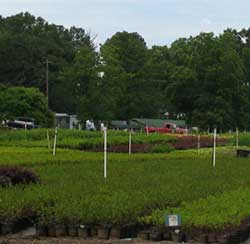
Figure 1-Mexican laborers working at the Doug Young Nursery on a warm May day.
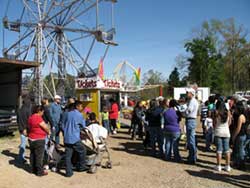
Figure 2-The town of Forest Hill holds an annual three day Nursery Festival each March that includes a parade and a carnival. Here festival goers wait in line to purchase tickets for the rides.
According to a recent article in the Alexandria Town Talk, the area is also probably home to the largest concentration of Hispanic population in Rapides Parish (Donica, 2007). Despite their growing presence, however, little is known about this population. It is therefore hoped that the following will serve as an introduction to the Mexican community of Forest Hill and their traditions.
The significance of the Hispanic population of Forest Hill is reflected in census data. According to the U.S. Census Bureau (2005), 58 (or 12.7 percent) of Forest Hill’s population of 458 are of Hispanic origin. Furthermore, 90 percent of the Hispanics recorded by the census are of Mexican origin. It is apparent, however, that the Hispanic population has been greatly undercounted. According to Mayor Marcia Young, an estimated 250 to 400 Hispanics presently live in the town of Forest Hill. Within the surrounding area itself, she estimates a population of some 2,500. Hispanic workers were first brought to the area in 1978, but a majority of the population are relatively recent arrivals. According to Fernando Martínez, a manager at the Doug Young Nursery, the Hispanic population of Forest Hill began to grow rapidly in the mid-1990s, when workers started to bring their families with them. While most females accompany their husbands, Francis Vargas, co-owner of Vargas nursery, stated that a significant number of single women have come alone.
A majority of the Mexican workers come from the central highlands of Guanajuato state, and in particular, from rural areas outside the state capitol of San Miguel de Allende. The remaining Hispanic population “comes from all over Mexico.” While Mexican workers dominate, several workers are originally from Honduras, Guatemala, El Salvador, and Columbia. Over time, an increasing number of Hispanic workers have come to call Forest Hill home and about half are now believed to be permanent residents.
Mexican Traditions
When people migrate they take their culture and traditions with them. This is also true of the Hispanic workers of Forest Hill, the great majority of whom are of Mexican origin. As one Louisianan resident of the region noted, “they definitely didn’t stop being Mexican when they came here.” Mexican workers and residents are also influenced by their day-to-day interaction with native Louisianans. Community members are able to maintain their traditions, however, through a continuing link to their homeland, the increasing presence of Mexican origin population, and the influence of the Catholic Church, which fosters the retention of Mexican traditions. In Forest Hilll, Mexican cultural traditions are most apparent in religious and secular celebrations, foodways, music and dance. To a lesser extent, some workers also use traditional medicines or practice a traditional craft.
The Catholic Church
The most important institution in the Hispanic community is the Catholic Church. The church plays a central role in the lives of community members and many of the Mexican traditions practiced in the area are closely associated with it. The church was started as a mission church by the Catholic Diocese of Alexandria in 1995 to provide services to the growing Hispanic population of the area. The church, called Misión de Nuestra Señora de Guadalupe (Our Lady of Guadalupe Mission) is named for the patron saint of Mexico (Fig. 3). A terra cotta statue of the Virgin of Guadalupe sits at the end of a small courtyard next to the church with garlands containing the tri-colors of the Mexican flag strung across it (Fig. 4).
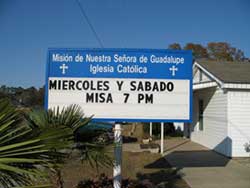
Figure 3-Misión de Nuestra Señora de Guadalupe Iglesia Católica, Forest Hill.
A sign in front of the Hispanic community’s Catholic Church advertises masses at 7:00 pm on Wednesdays and Saturdays. The church was named after the Virgin of Guadalupe, the patron saint of Mexico.
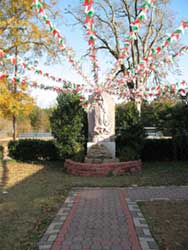
Figure 4-Misión de Nuestra Señora de Guadalupe Iglesia Católica, Forest Hill.
A terra cotta statue of the Virgin of Guadalupe rests in a small courtyard located next to the church. Note the brightly colored garlands that contain the tri-colors of the Mexican flag.
Masses are said in Spanish each Wednesday and Saturday evening at 7:00 pm (8:00 pm during daylight savings time) by Father Pedro Sierra, who comes to town once a week from Alexandria. Several nuns from Mexico also come to the church on Mondays and Wednesdays, and on important holidays (Fig. 5). While the church was built by the Catholic diocese, the Mexican community took part in its construction. According to Fernando Martínez, the local Mexican population constructed the interior, including the tile floors and roof. Money was raised to pay for the materials, while labor was donated. Fundraisers continue to be held to help pay for the upkeep of the church. Church members raise money by selling traditional foods such as tamales and tacos at these events. A church group headed by a six member board organizes church events and collects money for its maintenance.
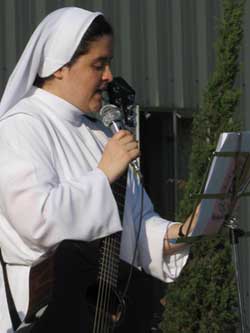
Figure 5-Catholic nuns who are originally from Mexico come to Forest Hill every Monday and Wednesday and for important religious and secular holidays. In this photo one of the sisters leads children in the singing of a song in honor of Mothers on Mother’s Day.
Forest Hill is located in a predominantly Protestant region, but the Misión de Nuestra Señora de Guadalupe was not the first Catholic church in the area. A much older church called St. Martin’s was constructed near Bayou Boeuf in 1881, and moved to Lecompte in 1899 (Miller, 2005). That church, replaced by a new church in 1956, was originally attended by a small group of residents of French, Belgian, and Italian descent, who settled the area in the first part of the nineteenth century. Jerry Herrin also stated that a number of Hispanics in the area attend the Catholic church in Lecompte, which is led by Father Bruce Miller, a native Louisianan of French descent. At the Forest Hill Catholic Church, on the other hand, Fernando Martínez estimated that Saturday masses are typically attended by 270 to 300 people. During special religious holidays, such as the feast day of the Virgin of Guadalupe, Christmas, Ash Wednesday, and Easter, up to 500 people may attend mass.
The majority of the Hispanic population is Catholic, but a Baptist and an Assembly of God church, located across from each other on the road into Forest Hill (Hwy 112), recognize the growing importance of the Hispanic population. This recognition is reflected in the messages in Spanish that are sometimes placed on their signs. The sign in front of the Pisgah Baptist church, for example, welcomes all to its Sunday service in Spanish (Fig. 6). In December, the sign in front of the Assembly of God church, whose pastor, the Reverend David Remedios is originally from Cuba, advertised free phone calls to Mexico (Fig. 7). The church had recently acquired some 1,000 phone cards and offered free phone calls in an attempt to outreach to the Hispanic community. Once the cards were used up, however, the message was taken down. According to Heidi Jonker, who works at the church, approximately 30 Hispanics in the area belong to the church.
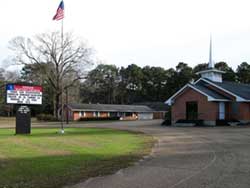
Figure 6-One of the first indications that Hispanics live in this area is the sign located in front of Pisgah Baptist Church, which states in Spanish that “all are welcome.” The sign also advertises the times for Sunday mass and includes a quote from John 14:6 at the bottom.
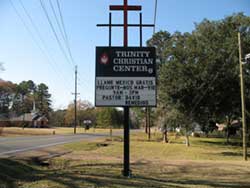
Figure 7-In December, the local Assembly of God church advertised free phone calls home to Mexico in an attempt to outreach to the local Hispanic community. Once the phone cards were used up, however, the Spanish message was taken down.